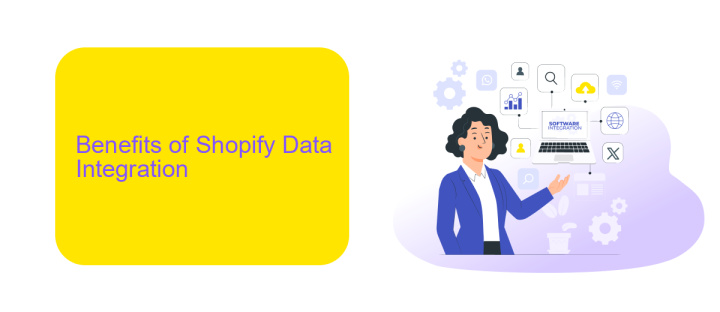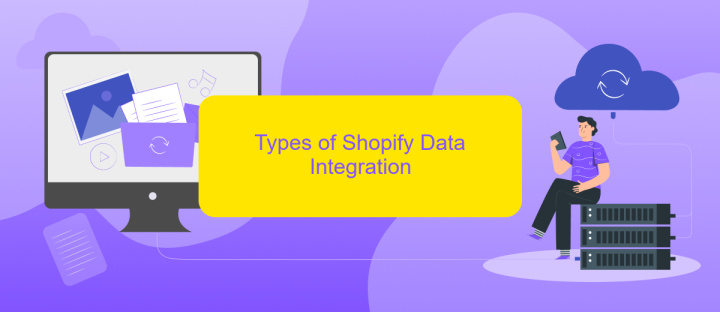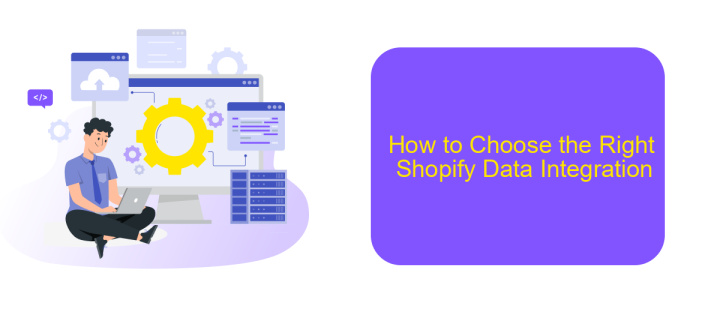Shopify Data Integration
In today's digital landscape, seamless data integration is crucial for e-commerce success. Shopify, a leading e-commerce platform, offers robust tools to help merchants integrate and manage their data efficiently. This article explores the various methods and best practices for Shopify data integration, ensuring your online store operates smoothly and maximizes its potential for growth.
Introduction
Shopify Data Integration is essential for businesses aiming to streamline their operations and enhance their online store's performance. Integrating various data sources with Shopify allows for seamless data flow, enabling businesses to make informed decisions based on real-time information.
- Automated data synchronization
- Improved inventory management
- Enhanced customer insights
- Optimized marketing strategies
One of the efficient ways to set up these integrations is by using services like ApiX-Drive. ApiX-Drive allows businesses to connect Shopify with a multitude of other platforms without requiring extensive technical knowledge. This service ensures that data is continuously updated and synchronized, providing a reliable foundation for business operations and growth.
Benefits of Shopify Data Integration

Integrating Shopify data offers numerous benefits for businesses looking to streamline their operations and enhance their decision-making processes. By centralizing data from various sources, companies can achieve a unified view of their sales, inventory, and customer behavior. This holistic perspective enables more accurate forecasting, efficient inventory management, and personalized marketing strategies, ultimately leading to increased sales and customer satisfaction.
Additionally, leveraging services like ApiX-Drive simplifies the integration process, allowing businesses to connect Shopify with other platforms seamlessly. ApiX-Drive automates data synchronization, reducing the need for manual data entry and minimizing errors. This not only saves time but also ensures data consistency across all channels. As a result, businesses can focus on strategic growth initiatives rather than getting bogged down by technical challenges, thereby maximizing their operational efficiency and overall performance.
Types of Shopify Data Integration

Shopify data integration is essential for businesses aiming to streamline their operations and improve data accuracy. There are various types of data integration methods available, each catering to different business needs and technical capabilities.
- Manual Data Integration: This involves manually exporting and importing data between Shopify and other systems. While it can be time-consuming, it is often used by smaller businesses with limited integration needs.
- Custom API Integration: For businesses with specific requirements, custom APIs can be developed to facilitate seamless data transfer. This method offers high flexibility but requires technical expertise.
- Third-Party Integration Tools: Services like ApiX-Drive simplify the integration process by offering pre-built connectors. These tools allow for automated data transfer between Shopify and various other platforms, reducing the need for manual intervention.
- Middleware Integration: Middleware solutions act as intermediaries, enabling data to flow smoothly between Shopify and other systems. This type of integration is ideal for businesses with complex data workflows.
Choosing the right type of Shopify data integration depends on your business needs, technical capabilities, and budget. Tools like ApiX-Drive can significantly simplify the process, allowing you to focus on core business activities while ensuring accurate and timely data transfer.
How to Choose the Right Shopify Data Integration

Choosing the right Shopify data integration is crucial for optimizing your e-commerce operations. The right integration can streamline processes, improve data accuracy, and enhance overall business performance. To make an informed decision, consider factors like compatibility, ease of use, and support services.
First, ensure that the integration is compatible with your existing systems and meets your specific business needs. Look for integrations that offer seamless data synchronization and real-time updates. Next, evaluate the user interface and ease of setup. A user-friendly platform can save you time and reduce the learning curve for your team.
- Compatibility with existing systems
- User-friendly interface
- Real-time data synchronization
- Customer support and documentation
Services like ApiX-Drive can be particularly useful as they offer a wide range of pre-built integrations and a straightforward setup process. Additionally, they provide excellent customer support and comprehensive documentation, making it easier for you to manage and troubleshoot your integrations. By carefully considering these factors, you can choose the right Shopify data integration to enhance your business operations.
- Automate the work of an online store or landing
- Empower through integration
- Don't spend money on programmers and integrators
- Save time by automating routine tasks
Case Studies and Examples
One notable case study is a small e-commerce business that successfully integrated Shopify with their CRM system using ApiX-Drive. Prior to the integration, the company struggled with managing customer data and order details across multiple platforms. By leveraging ApiX-Drive, they were able to seamlessly sync their Shopify store with their CRM, resulting in improved data accuracy and operational efficiency. This integration allowed them to automate customer follow-ups and streamline their sales process, ultimately boosting their revenue by 30% within six months.
Another example involves a medium-sized retail company that utilized ApiX-Drive to connect Shopify with their email marketing platform. Before the integration, their marketing team faced challenges in segmenting and targeting their customer base effectively. With the help of ApiX-Drive, they automated the transfer of customer purchase data from Shopify to their email marketing tool, enabling personalized and timely marketing campaigns. This led to a 20% increase in email open rates and a 25% rise in conversion rates, demonstrating the significant impact of effective data integration on marketing performance.
FAQ
What is Shopify Data Integration?
How can I integrate Shopify with other platforms?
What types of data can be integrated with Shopify?
Is it possible to automate Shopify data integration?
What are the benefits of Shopify Data Integration?
Strive to take your business to the next level, achieve your goals faster and more efficiently? Apix-Drive is your reliable assistant for these tasks. An online service and application connector will help you automate key business processes and get rid of the routine. You and your employees will free up time for important core tasks. Try Apix-Drive features for free to see the effectiveness of the online connector for yourself.


